The Canadian housing market stands at the precipice of what could be its most transformative period in recent history, as a confluence of factors threatens to reshape the real estate landscape in 2025. At the heart of this impending storm lies a staggering statistic: more than 1.2 million Canadian homeowners will face mortgage renewals in 2025, with another 980,000 following in 2026 – collectively representing approximately 60% of all outstanding mortgages in the country.
The gravity of this situation becomes particularly stark when considering that approximately 85% of these fixed-rate mortgages were secured when the Bank of Canada’s rate languished at or below 1%. Today, despite recent cuts, the key rate stands at 3.75%, marking a dramatic shift in the financial landscape that homeowners must navigate. For perspective, a typical homeowner with a $500,000 mortgage could face hundreds of dollars in additional monthly payments upon renewal.
Royal LePage’s president and CEO, Phil Soper, paints a particularly intriguing picture of Toronto’s future in this context. Despite current market headwinds, he predicts that 2025 will witness Toronto surpassing Vancouver as Canada’s most expensive real estate market – a historical shift that could reshape the nation’s property hierarchy. This prediction gains credibility when considering Toronto’s current sales-to-new listings ratio of 28%, down from 29% in 2023, indicating a market primed for a potential surge.
The plot thickens with Donald Trump’s return to the White House, introducing an additional layer of complexity to Canada’s housing equation. His proposed 10% blanket tariff on imports and potentially aggressive trade policies could send ripples through the Canadian economy, affecting everything from construction costs to mortgage rates. With daily trade between the two nations exceeding $3.6 billion and Canada purchasing three-quarters of America’s merchandise exports – approximately US$500 billion annually – the stakes couldn’t be higher.
Bank of Canada’s Senior Deputy Governor Carolyn Rogers has cautioned against quick fixes, particularly warning about the temptation to tinker with Canada’s mortgage structure. The current system, while exposing borrowers to renewal risk, has historically maintained one of the lowest default rates among advanced economies, with mortgage arrears never exceeding 0.5% even during the 2008-09 financial crisis. Currently, the overall mortgage delinquency rate sits at 0.19%, up from a record low of 0.14% in 2022 but still well below the pre-pandemic rate of 0.28%.
The alternative lending space has already begun to show stress fractures, with delinquency rates for single-family homes climbing to 5% in the second quarter of 2024, up dramatically from 1.7% in late 2022. Foreclosures in this sector have risen to 3.5% from 1.3% during the same period, serving as a potential harbinger for the broader market.
Yet, amidst these challenges, some market observers see opportunity. Michael Davenport, an economist at Oxford Economics, predicts that while early 2025 may see increased listings as some homeowners opt to sell rather than face higher payments, the middle of the year could witness a significant uptick in housing demand as interest rates moderate and mortgage guidelines adjust. This optimism is partially supported by current household savings rates of approximately 7%, significantly higher than the typical 2% – providing some Canadians with a financial buffer.
The situation recalls the housing market adjustments of the early 1980s, though today’s circumstances differ markedly. Modern homeowners benefit from more sophisticated financial products, better regulatory oversight, and a banking system that learned valuable lessons from past crises. However, they also face unprecedented challenges, including record-high household debt levels and a cost of living crisis that leaves little room for increased housing expenses.
For prospective buyers and current homeowners alike, 2025 looms as a year that could redefine their relationship with real estate. The combination of mass mortgage renewals, political uncertainty, and evolving market dynamics suggests that Canada’s housing market is approaching a crucial inflection point – one that could either reinforce its fundamental stability or expose underlying vulnerabilities that have built up during years of easy money and rising prices. With Canada maintaining one of the highest home ownership rates in the world at 66.5%, and 84% of young people still believing in home ownership as a goal, the stakes for maintaining market stability have never been higher.
-The TanTeam Editorial



